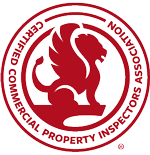Terms You Should Know:
- wind uplift: The upward-acting pressure on a roof’s components resulting from wind traveling across the roof.
- windward: The side of the building that’s facing the wind.
- leeward: The side of the building that’s sheltered from the wind; downwind.
Wind Forces
A building is an obstruction to wind flow and causes a change in direction of airflow and pressure over a building’s surface. Consequently, wind damage may occur indirectly from the impact of wind-borne debris or directly through the pressure it exerts.
Generally, the direction of airflow corresponds to pressure in the following ways:
- Positive pressure occurs on windward surfaces.
- Negative pressure occurs on leeward surfaces.
- Negative pressure occurs at sharp discontinuities (eaves, corners, and rakes).
NOTE: The presence of openings to the building’s interior also affects the roof. As air infiltrates through openings and cracks, the internal air pressure increases. This ranges from slightly elevated air pressure caused by HVAC equipment, for example, to strongly elevated air pressure caused by strong thunderstorm winds entering window and door openings.
Wind Uplift
Wind uplift is a force measured in pounds per square foot (psf). It occurs when the pressure below the roof is greater than the pressure above. This can be intensified during high winds, as air infiltrates into the building, causing an increase in air pressure below the roof, while the speed of the wind over the roof reduces the air pressure above it.
When wind uplift is greater than what the building system was designed for, and in the worst-case scenario, the roof deck could potentially detach from the supporting structure. This is more common if the roof deck has open joints, unlike cast-in-place roof decks. However, engineers and building designers follow strict codes and guidelines to prevent this, which vary by building location and likelihood of exposure to high winds.
Learn more about the mechanics of how wind creates damage in InterNACHI’s Mastering Roof Inspections: Wind Damage, Part 3.
Wind Damage to Commercial Buildings
Direct wind-caused damage usually occurs at windward corners and edges. Recall that they are subject to a higher magnitude of pressures. This is usually identified by the scouring of ballast or the peeling of roofing materials, while the areas farther away from the windward edges and corners experience a lower magnitude of pressures and are less likely to become damaged initially unless wind speed drastically increases. However, direct wind-caused damage may also be identified by distorted or missing flashing or roof equipment and the ballooning of roofing material.

Wind scouring
Commercial property inspectors should inspect for the following signs of wind damage:
- flashing removed or loosened around the perimeter of the roof;
- membrane or ballast removed or lifted and dropped back into place;
- insulation removed or lifted and dropped back into place;
- dislodged or delaminated structural deck panels;
- roof surface damaged by impact from wind-borne debris; and
- dislodged skylights, vent grates, or vent pipes.
Tears and punctures to the surface of a roof and its materials are referred to as indirect wind damage.

Dislodged roof equipment

Damage from wind-borne debris

Disengaged flashing

Membrane above metal edge flashing (wind may cause membrane to peel)
It’s important for wind damage to be identified and repaired early on because dislodged and damaged elements can spread a considerable distance, even if the components are properly secured. In fact, according to commercial property insurer FM Global, most roof blowoffs start with a failure at the perimeter. Additionally, minor penetrations in the building’s envelope can result in a large area of damage to the interior of a building. Hence, a building may appear to be able to withstand wind forces until disaster strikes.
Additional Commercial Property Inspector Resources:
Why Low-Slope Roofs Fails
Low-Slope Roof Components
The History of Low-Slope Roofs



